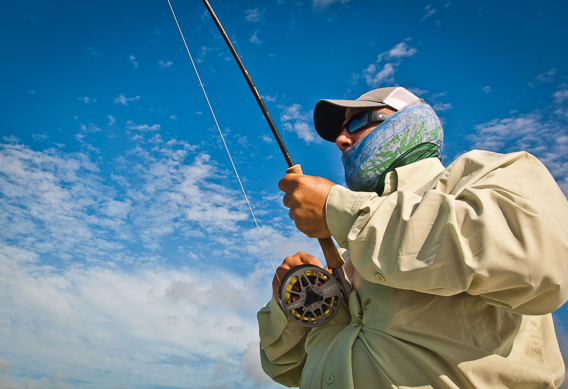You’ve hooked a monster bonefish! Now, what do you do to avoid losing it? In this week’s Deneki Chronicles, we have seven things to consider to avoid breaking off a bonefish.

Breaking off a bonefish is a bummer. After all the hard work required to find, cast to, and finally hook one it’s the last thing you want to do.
That said, despite their best intentions, we still see a lot of anglers coming up with plenty of ways to do it, the most common of which are as follows.
7 Ways to Break Off a Bonefish
- Holding on to your hook set. You’ve resisted the urge to raise the rod in ‘trout-set‘ fashion, and have buried the hook with a nice long strip-set. Fantastic. However, you have to let go of that job-well-done as soon as the fish runs. Holding onto that hook set for too long will break ’em off every time.
- Fishing tippet that’s too light. There’s no pride in fishing tippet any lighter than is necessary. Fishing the heaviest tippet you can get away with reduces fight time and the chance of breaking off, both of which are in the best interest of the fish. We like tippet somewhere in the 14-16 lb. range on South Andros, and discourage using anything less than 12 lb. test.
- Tying poor knots. Bad knots lead to break-offs, and if there are any species that will test your knots, it’s a bonefish. A couple of our favorites? We like the non-slip mono loop or the Becker (Orvis) knot for most tippet-to-fly connections. Grab a spool of cheap mono and practice during your next binge session on Netflix. A little practice goes a long way.
- Fishing old and/or used flies. We’ve lost count of how many supposed ‘double-digit’ bonefish were lost to broken hooks. The culprit? Flies that were fished in saltwater during another trip and put back into the fly box. Saltwater corrodes all things including ‘stainless’ saltwater hooks. Even after rinsed off with fresh water, hooks often corrode under the thread wraps of the fly leaving only a subtle hint of a weak hook. After your trip, do yourself a favor and ditch any flies that were fished in salt water, or you might risk breaking a hook mid-fight.
- Watching the fish, not your line. When clearing line, it’s important to focus on getting that fly line on the reel, not watching the fish race around. Focusing on the fish increases the chance of your fly line wrapping around the rod butt, reel handle, pliers, hip pack, or anything else in the way for a definitive break-off. After setting the hook, separate those hands and follow your excess fly line all the way to the reel, then enjoy the show.
- Standing on your line. We’ve all been there.. No tippet can stand up to the pull of a bonefish against the weight of a grown human being. Here’s a simple tip; when fishing from a skiff keep your feet pointed ahead at the 12 o’clock position and don’t lift them unless you absolutely have to. That will keep the fly line from unexpectedly creeping under your foot while also keeping you mindful of which way you’re facing in relation to the boat.
- Pulling hard in the mangroves. If a bonefish has taken you into the mangroves, pulling hard in an attempt to dig him back out will most likely result in a break-off. Doing so increases tension on your leader and tippet as it rubs against the mangrove shoots, much line plucking an over-tightened guitar string. Instead, back off of your drag completely (without risking a backlash) and allow the fish to run. More often than not, the fish will settle or even stop completely, allowing you to follow him on foot to a better fighting position before putting the heat on again.
Hate breaking off bonefish? We do too. Consider the above to save more flies and bring more bonefish to hand.
Do you have reputation for unbuttoning bonefish in a way that we didn’t list above? Leave us a comment below and tell us how.
Leave a Reply